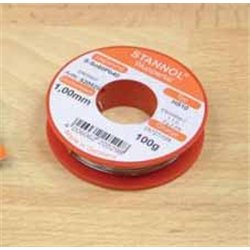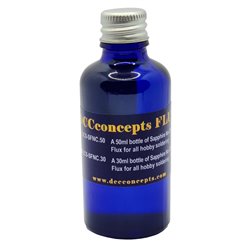Weathering by using pigments is a great way to add depth and realism to your model. The process is easy to apply and...
No products
Product successfully added to your shopping cart
There are 0 items in your cart. There is 1 item in your cart.
Search Tips
Christmas and New Year
We are dispatching orders every weekday apart from Christmas Day, Boxing Day and New Year's Day.
If you order is time critical, select next day delivery at checkout.
The shop in Sandown is closed from 25th December, reopening on 30th December.
What does flux do for soldering? in layman's terms!
Most modellers know that flux should be used to make better soldering joins, however, too many articles on the subject assume a certain amount of knowledge and can leave the mere mortal a little baffled.
But before we explain about flux, we must first understand metal. Metal is not always clean or pure, it may look clean, it may even feel clean, but it has tiny imperfections called oxidants that stop it from allowing electricity to pass through smoothly. These imperfections also stop the metal from sticking to other metals when trying to solder them together. So as you can see, these imperfections are going to do nothing to help you solder two wires together well. The imperfections are caused by a chemical reaction that happens when metal is exposed to air, so there is pretty much nothing we can do to stop them from occurring. This chemical reaction is called oxidisation.
Flux has two purposes, firstly, it acts as a cleaning agent for metal. When the flux is heated by a soldering iron, it evaporates taking with it the imperfections and leaving behind a nice clean metal surface.
The second function of flux, is to make the solder you are using really runny. Without this happening, the solder will melt into a blob and happily sit between your two pieces of metal with no interest in attaching itself to either one. The flux will make your solder runny enough to find its way into the microscopic cracks, channels, valleys and ripples of the metal's surface that you would only see if looking at your metal through a microscope. When the heat of the soldering iron is removed, the solder sets, entangled into the metal on either side and a nice clean, secure, conductive bond is achieved.
Now, of course, this is a very animated and simplistic way of describing the way flux works, and will likely leave soldering experts with their heads in their hands. But for those new to the world of soldering, hopefully, it gives you an idea of the brilliance and importance of flux.
Click here to receive the tips weekly in your mailbox. You can unsubscribe at any time.










